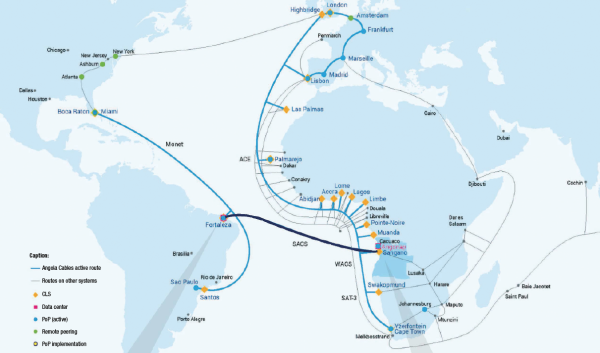08 November 2018

Angola Cables says the South Atlantic Cable System offers the lowest latency between the Americas, Africa and Europe.
The South Atlantic Cable System (SACS) is now open for commercial traffic.
On 26 September, Angola Cables announced that its system not only offers the first and fastest link between Africa and the Americas with the lowest latency, but that it will also provide a more direct routing for internet traffic in the southern hemisphere.
Manufactured and powered by NEC, it’s claimed SACS is one of the most advanced submarine systems to go into commercial operation.
It has been designed with 100Gbps coherent WDM technology on an end-to-end solution, and features four fibre pairs for a total design capacity of 40Tbps between Brazil and Angola.
According to Angola Cables, data transfers will be five times faster than existing cable routings, reducing latency between the two countries from 350ms to 63ms.
Luanda will also connect to London and Miami with around 128ms latency.
Angola Cables says these two major content hubs will position Angola as a strategic point to serve the trans-Atlantic region with low latency and resilient connections.
It adds that given the onward connections to the recently completed Monet cable and the West Africa Cable System, SACS will also offer reduced latency between Miami and Cape Town from 338ms to 163ms.
Angola Cables CEO António Nunes says that the commercialisation of SACS is “more than just a game-changer” when it comes to data connectivity and services between the two continents.
“By developing and connecting ecosystems that allows for local IP traffic to be exchanged locally and regionally, the efficiency of networks that are serving the southern hemisphere can be vastly improved,” says Nunes. “As these developments progress, they will have considerable impact for the future growth and configuration of the global internet.”







